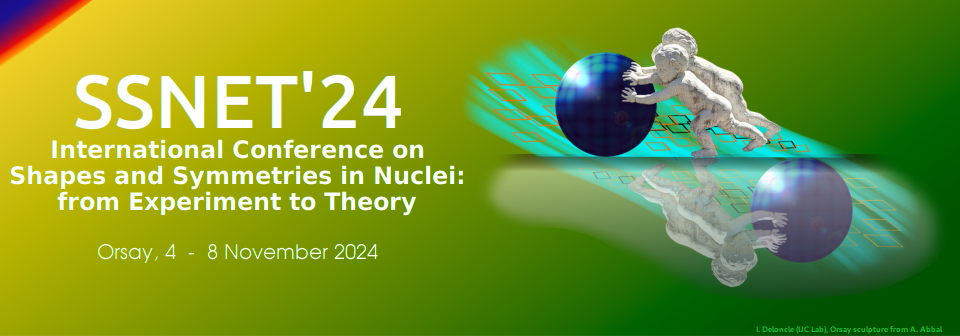Orateur
Description
First-order electromagnetic processes are the primary mechanism by which excited states in atomic nuclei relax, most-often via single γ-ray emission. Since both the initial- and final-state wave functions possess a well-defined spin and parity, conservation laws impose a characteristic multipolarity for each discrete transition. Nature favours pathways that proceed via the lowest-available multipole order. Yet, situations arise in which the only available decay pathway is hindered by a larger spin-change requirement.
The only proposed observation of a discrete, hexacontatetrapole (E6) transition in nature occurs from the isomeric, T1/2 = 2.54-minute decay of 53mFe. However, there are conflicting claims concerning its γ-decay branching ratio, and a rigorous interrogation of γ-ray sum contributions is lacking in the published work [1]. Experiments performed at the Australian Heavy Ion Accelerator Facility were used to study the decay of 53mFe, and confirm the existence of the E6 transition. For the first time, sum-coincidence contributions to the weak E6 decay have been firmly quantified using complementary experimental and computational methods [2]. Shell-model calculations were also performed in the full pf model space to investigate the nature of high-multipolarity transitions in atomic nuclei. This presentation will provide an overview the experiments, results obtained from this work and their interpretation.
This work is supported by the Australian Research Council Grants No. DP170101673 and DP170101675, the International Technology Centre Pacific (ITC-PAC) under Contract No. FA520919PA138, and NSF Grant PHY-2110365. Support for the ANU Heavy Ion Accelerator Facility operations through the Australian National Collaborative Research Infrastructure Strategy program is acknowledged.
References
[1] J. N. Black, W. C. McHarris, and W. H. Kelly, Phys. Rev. Lett. 26, 451 (1971); J. N. Black, W. C. McHarris, W. H. Kelly, and B. H. Wildenthal, Phys. Rev. C 11, 939 (1975); D. Geesaman, Spin gap isomers in 52Fe, 53Fe, and 54Co, Ph.D. thesis, State University of New York, Stony Brook (USA) (1976).
[2] T. Palazzo et al., Phys. Rev. Lett. 130, 122503 (2023).

